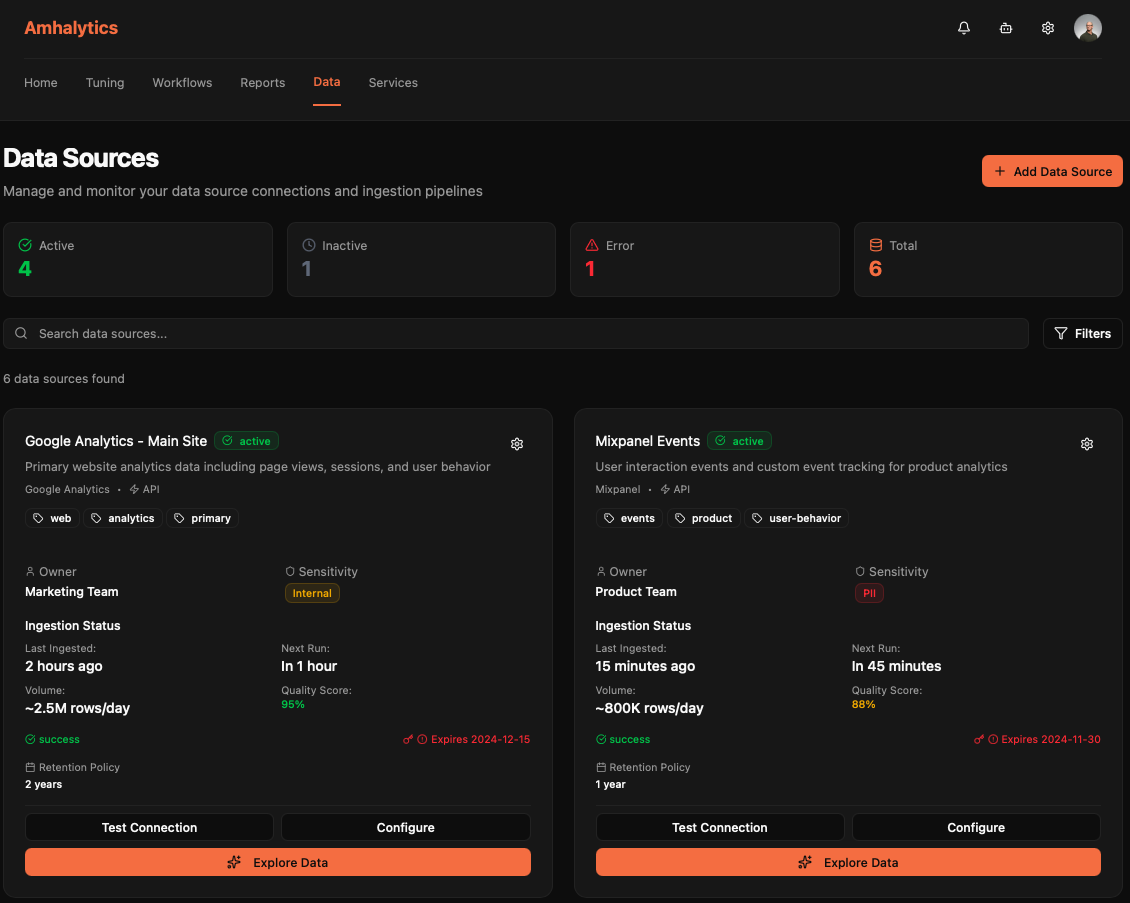Amhalytics
Leveraging AI to build an analytics prototype.
Amhalytics is a demo of a
hypothetical analytics product.

Context
Figma Make is an LLM-powered prototyping tool released in July 2025. Since it’s being marketed toward product designers, I was curious to test it out through a small experiment.
For this experiment, I set out to build a web analytics platform. Web analytics has been top of mind lately—I’m currently designing an analytics product and, as part of my research, I’ve spent time analyzing and using best-in-class platforms.
This research has helped me understand the relevant KPIs, workflows, and core analytics use cases. My goal was to apply those learnings and quickly create a demo using Figma Make.
Key Takeaways
- Less is more when it comes to instructions. Developing an intuitive sense for instruction length matters—overly detailed prompts don’t always yield better results.
- Inputs shape outputs. How you use an LLM is more important than what it produces; the quality of the prompt defines the quality of the prototype.
- Domain knowledge amplifies performance. Clear prompts grounded in real product knowledge (like KPIs or workflows) led to sharper, more relevant results than generic instructions.
Observations
The table below summarizes a simplified analysis of the prompts I used during the experiment. The most interesting findings relate to how prompts and instructions interact (e.g. items marked with ). While research is ongoing around the impact of instruction density on LLM performance, I’m really curious about how domain knowledge influences instruction quality and effectiveness.
| Measure | Score |
|---|---|
| Total Prompt Count | 15 |
| Avg. Instruction Count no. of explicit instructions | 3.67 |
| Instruction Density (%) ratio of instructions to total words | 9.38 % |
| Avg. Token Density prompt length | 103.47 |
| Vocabulary Diversity (%) Unique words ÷ total words | 76.55 % |
The following posts denote additional learnings associated with this experiment:
Amhalytics Demo
Amhalytics has been published through Figma Make. You can click-through the top-level pages and apply filters.